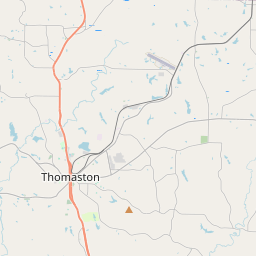First Post Office
Historical marker location:






1775: The Second Continental Congress establishes the Constitutional Post to provide postal services in the thirteen American colonies. Benjamin Franklin is appointed as the first Postmaster General.
1792: The Postal Service Act is passed, officially establishing the United States Postal Service as a federal agency. It sets the foundation for the organization and regulation of postal operations.
1847: The introduction of prepaid adhesive postage stamps revolutionizes mail delivery, simplifying the process and promoting efficiency.
1860: The Pony Express, a fast mail delivery service, is launched to transport mail between the eastern and western regions of the United States. It becomes famous for its daring riders and swift delivery.
1863: Free city delivery is introduced, allowing mail to be delivered directly to urban households and businesses rather than being picked up from local post offices.
1864: The Postal Money Order system is established, providing a secure way for people to send money through the mail.
1896: Rural Free Delivery (RFD) is implemented, bringing mail delivery to rural areas for the first time. This service significantly improves communication and connects rural communities to the rest of the country.
1971: The United States Postal Service is reorganized as an independent agency within the federal government, operating as the USPS. It is no longer directly controlled by the Postmaster General.
1974: The USPS introduces the ZIP (Zone Improvement Plan) Code system, which assigns unique codes to geographic areas to improve mail sorting and delivery efficiency.
1997: The USPS launches its website, usps.com, providing online access to postal services, tracking, and information.
2001: Following the 9/11 terrorist attacks, the USPS faces security challenges and undergoes significant changes to enhance mail screening and protection.
2013: The USPS announces the end of Saturday mail delivery for regular letters and reduces delivery to five days a week.
Present: The USPS continues to be a vital service, handling billions of pieces of mail annually and adapting to changes in technology, communication, and the shipping industry. It plays a crucial role in connecting people, facilitating commerce, and serving as a backbone of the American communication infrastructure.
This timeline provides an overview of key milestones in the history of the USPS, which has played a crucial role in facilitating communication and connecting communities throughout the United States for over two centuries.
In the early 20th century, Georgia was known for its "convict leasing" system, which allowed companies to lease prisoners from the state for labor. The system was abolished in 1908 after investigations revealed widespread abuse and mistreatment of prisoners.
In the early years, Upson County was an agrarian society, with cotton being the primary crop. The introduction of the railroad in the mid-1800s played a crucial role in the county's economic growth, facilitating transportation of goods to neighboring towns. With the railroad's arrival, manufacturing and trade in Upson County flourished, solidifying its position as a commercial hub.
The Civil War had a significant impact on Upson County, as it did on much of the South. Many residents enlisted in the Confederate Army, contributing to the war effort. Post-war, the county faced the challenges of Reconstruction, but gradually recovered, diversifying its economy beyond just agriculture.
In the 20th century, industry and manufacturing continued to thrive in Upson County. The textile industry was particularly successful, attracting businesses and providing jobs for the community. Over time, the county modernized, with advancements in education, healthcare, and infrastructure. Today, Upson County remains a vibrant community with a mix of agricultural, industrial, and service-based industries, embracing its heritage while striving for progress.
Upson County Timeline
This timeline provides a concise overview of the key events in the history of Upson County, Georgia.
- 1824 – Upson County was established on December 15, 1824, as a result of the Treaty of Indian Springs.
- 1825 – Thomaston was established as the county seat.
- 1847 – The Macon and Western Railroad reached Thomaston, boosting the local economy.
- 1861 – Upson County sent soldiers to fight in the Civil War on the side of the Confederacy.
- 1875 – The first cotton mill was established in Thomaston, ushering in a period of industrial growth.
- 1936 – The famous textile strike known as the "Thomaston-Upson County Strike" occurred.
- 1965 – The R.G. LeTourneau plant was established, bringing employment opportunities to the area.
- 1989 – The Flint River floods devastated parts of Upson County.
- 1996 – Upson County celebrated its 125th anniversary.
- 2010 – The population of Upson County was recorded at 27,153 during the U.S. Census.